The Whigs were a political party in the Parliaments of England, Scotland, Ireland, Great Britain and the United Kingdom. Between the 1680s and the 1850s, the Whigs contested power with their rivals, the Tories. The Whigs became the Liberal Party when it merged with the Peelites and Radicals in the 1850s. Many Whigs left the Liberal Party in 1886 over the issue of Irish Home Rule to form the Liberal Unionist Party, which merged into the Conservative Party in 1912.
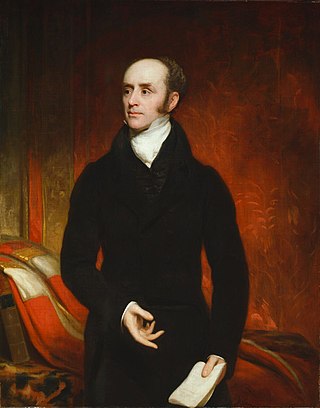
Charles Grey, 2nd Earl Grey,, known as Viscount Howick between 1806 and 1807, was a British Whig politician who was Prime Minister of the United Kingdom from 1830 to 1834. He was a descendant of the House of Grey and the namesake of Earl Grey tea. Grey was a long-time leader of multiple reform movements. During his time as prime minister, his government brought about two notable reforms. The Reform Act 1832 enacted parliamentary reform, greatly increasing the electorate of the House of Commons.
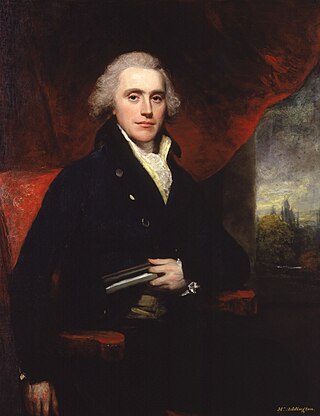
Henry Addington, 1st Viscount Sidmouth, was a British Tory statesman who served as prime minister of the United Kingdom from 1801 to 1804 and as Speaker of the House of Commons from 1789 to 1801.

William Wyndham Grenville, 1st Baron Grenville, was a British Pittite Tory politician who was Prime Minister of the United Kingdom from 1806 to 1807, but was a supporter of the Whigs for the duration of the Napoleonic Wars. As prime minister, his most significant achievement was the abolition of the slave trade in 1807. However, his government failed to either make peace with France or to accomplish Catholic emancipation and it was dismissed in the same year.
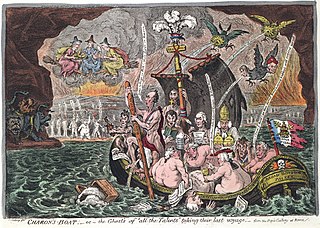
The Ministry of All the Talents was a national unity government in the United Kingdom formed by William Grenville, 1st Baron Grenville, on his appointment as Prime Minister on 11 February 1806, following the death of William Pitt the Younger.
The Peelites were a breakaway political faction of the British Conservative Party from 1846 to 1859. Initially led by Robert Peel, the former Prime Minister and Conservative Party leader in 1846, the Peelites supported free trade whilst the bulk of the Conservative Party remained protectionist. The Peelites later merged with the Whigs and Radicals to form the Liberal Party in 1859.
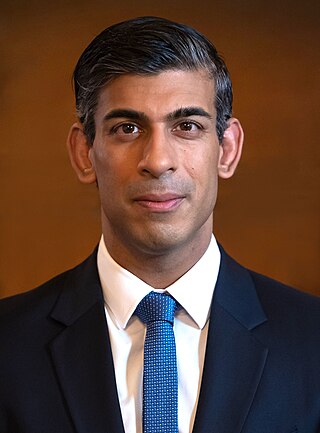
The Leader of His Majesty's Most Loyal Opposition, more commonly referred to as the Leader of the Opposition, is the person who leads the Official Opposition in the United Kingdom. The position is seen as the shadow head of government of the United Kingdom and thus the shadow prime minister of the United Kingdom.
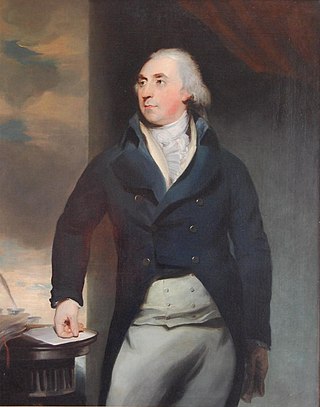
William Brabazon Ponsonby, 1st Baron Ponsonby , was a leading Irish Whig politician, being a member of the Irish House of Commons, and, after 1800, of the United Kingdom parliament. Ponsonby was the son of the Hon. John Ponsonby, the Speaker of the Irish House of Commons and Lady Elizabeth Cavendish, daughter of the 3rd Duke of Devonshire. He was invested as a Privy Counsellor of Ireland in 1784. He served as Joint Postmaster-General of Ireland (1784–1789).

George Tierney PC was an Irish Whig politician. For much of his career he was in opposition to the governments of William Pitt and Lord Liverpool. From 1818 to 1821 he was Leader of the Opposition in the House of Commons.
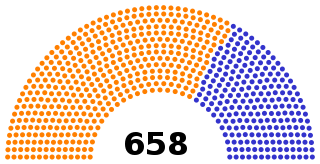
The 1806 United Kingdom general election was the election of members to the 3rd Parliament of the United Kingdom. This was the second general election to be held after the Union of Great Britain and Ireland.
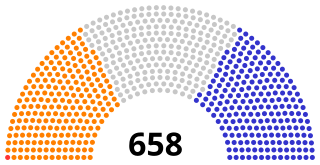
The 1807 United Kingdom general election was the third general election to be held after the Union of Great Britain and Ireland.
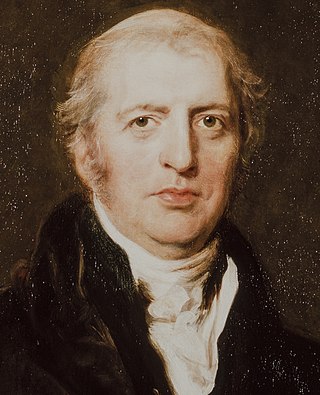
The 1812 United Kingdom general election was the fourth general election to be held after the Union of Great Britain and Ireland.
Cambridge University was a university constituency electing two members to the British House of Commons, from 1603 to 1950.
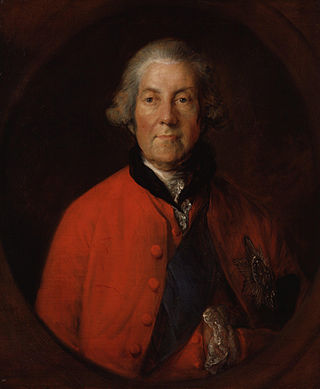
The Bedford Whigs were an 18th-century British political faction, led by John Russell, 4th Duke of Bedford. Other than Bedford himself, notable members included John Montagu, 4th Earl of Sandwich; Granville Leveson-Gower, 2nd Earl Gower; Richard Rigby, who served as principal Commons manager for the group; Thomas Thynne, 3rd Viscount Weymouth; Edward Thurlow; and George Spencer, 4th Duke of Marlborough

The Grenville Whigs were a name given to several British political factions of the 18th and the early 19th centuries, all of which were associated with the important Grenville family of Buckinghamshire.
Buckinghamshire is a former United Kingdom Parliamentary constituency. It was a constituency of the House of Commons of the Parliament of England then of the Parliament of Great Britain from 1707 to 1800 and of the Parliament of the United Kingdom from 1801 to 1885.

In the first Parliament to be held after the Union of Great Britain and Ireland on 1 January 1801, the first House of Commons of the United Kingdom was composed of all 558 members of the former Parliament of Great Britain and 100 of the members of the House of Commons of Ireland.
The 1768 British general election returned members to serve in the House of Commons of the 13th Parliament of Great Britain to be held, after the merger of the Parliament of England and the Parliament of Scotland in 1707.
Foxite was a late 18th-century British political label for Whig followers of Charles James Fox.

The Cobhamite faction were an 18th-century British political faction built around Richard Temple, 1st Viscount Cobham and his supporters. Among its members, the group included the future Prime Ministers William Pitt and George Grenville. They had a general Whig philosophy and were at first supporters of Prime Minister Sir Robert Walpole but later became opponents of his administration.



















